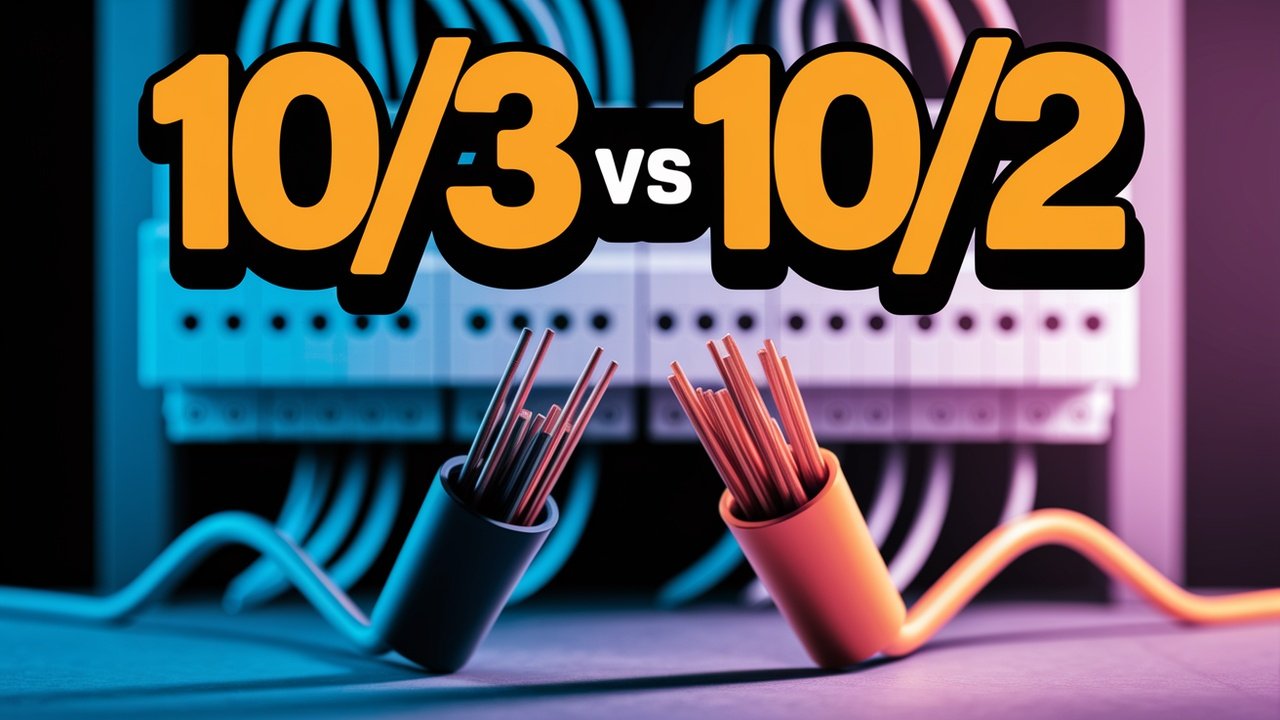10/3 vs. 10/2 Wire: Understanding the Differences and Choosing the Right Option

Introduction
When it comes to electrical wiring, choosing the right type of wire is crucial for safety, efficiency, and compliance with electrical codes. Two commonly used wire types are 10/3 wire and 10/2 wire, both of which serve distinct purposes in residential and commercial electrical applications. However, many homeowners and electricians often find themselves confused about the differences and when to use one over the other.
In this article, we’ll explore the key differences between 10/3 and 10/2 wire, including their structure, applications, advantages, and considerations for installation. By the end of this guide, you’ll have a clear understanding of which wire type is best suited for your electrical project and why making the right choice is essential for safety and performance.
What is 10/3 Wire?

10/3 wire is a type of electrical cable that consists of three conductors plus a ground wire. The number 10 refers to the wire gauge (AWG – American Wire Gauge), which indicates the wire’s thickness and ability to carry electrical current. The 3 in 10/3 means that there are three insulated conductors inside the cable, along with a ground wire.
Structure of 10/3 Wire:
- Three Conductors: Hot (black), Hot (red), Neutral (white)
- Ground Wire: Bare copper or green
- Wire Gauge: 10 AWG
- Common Jacket Material: PVC or NM-B (Non-Metallic Sheathed Cable)
- Typical Amp Rating: 30 amps
Common Applications of 10/3 Wire:
- 240V Appliances: Electric dryers, ovens, and water heaters
- Subpanels: Wiring for small subpanels in garages or workshops
- Multi-Circuit Installations: Used when two separate circuits share a neutral wire
10/3 wire is commonly used in applications where two hot wires are needed, such as in 240V circuits that require both phases of power (red and black wires), while still having a neutral connection (white wire) and a ground wire for safety.
What is 10/2 Wire?
10/2 wire consists of two conductors plus a ground wire and is typically used for 120V and 240V single-phase circuits. Like 10/3 wire, the number 10 represents the wire gauge, but the 2 in 10/2 indicates that there are only two insulated conductors inside the cable, along with a ground wire.
Structure of 10/2 Wire:
- Two Conductors: Hot (black), Neutral (white)
- Ground Wire: Bare copper or green
- Wire Gauge: 10 AWG
- Common Jacket Material: PVC or NM-B
- Typical Amp Rating: 30 amps
Common Applications of 10/2 Wire:
- Dedicated 120V Circuits: Large power tools, heavy-duty outlets
- 240V Circuits Without a Neutral: Water heaters, baseboard heaters
- Outdoor and Underground Wiring (With UF-B Type): Exterior lighting, well pumps
10/2 wire is often used for single-phase 240V circuits that do not require a neutral wire, such as water heaters and electric baseboard heaters. It can also be used in 120V circuits that require a higher amp capacity, such as some power tools and appliances.
Key Differences Between 10/3 and 10/2 Wire
| Feature | 10/3 Wire | 10/2 Wire |
|---|---|---|
| Number of Conductors | 3 (black, red, white) + ground | 2 (black, white) + ground |
| Voltage Applications | 240V (with neutral) | 120V or 240V (without neutral) |
| Common Uses | Dryers, ovens, subpanels | Water heaters, baseboard heaters, outlets |
| Amp Rating | 30 amps | 30 amps |
| Wire Jacket Type | NM-B, UF-B | NM-B, UF-B |
When to Use 10/3 vs. 10/2 Wire?
Use 10/3 Wire When:
✅ You need both 240V and 120V power from the same circuit (e.g., electric dryers and ovens).
✅ The appliance or device requires a neutral wire in addition to hot and ground.
✅ You are wiring a subpanel that requires two hot wires and a neutral.
Use 10/2 Wire When:
✅ The device operates on 240V only and does not require a neutral (e.g., baseboard heaters, water heaters).
✅ You are wiring a dedicated 120V circuit with a high power demand (e.g., some industrial power tools).
✅ You need a simpler and more cost-effective wiring solution for specific appliances.
Cost Considerations: Is 10/3 More Expensive Than 10/2?
Since 10/3 wire contains an additional conductor, it is generally more expensive than 10/2 wire. Prices can vary based on the manufacturer, length, and insulation type. On average:
- 10/3 wire costs 20-30% more than 10/2 wire due to the additional copper conductor.
- If a neutral wire is not needed, using 10/2 can save money on material costs.
However, using the wrong wire type can lead to code violations, safety risks, and improper functioning of appliances, so cost should not be the only factor when making a decision.
Safety and Electrical Code Compliance
When working with 10/3 or 10/2 wire, it’s crucial to follow National Electrical Code (NEC) guidelines:
- Use the correct breaker size (typically 30 amps for 10-gauge wire).
- Ensure proper grounding to prevent electrical hazards.
- Follow local code requirements, as some areas may have additional regulations for wire installation.
- Use outdoor-rated UF-B wire if running the cable underground or in wet locations.
If you’re unsure about which wire type to use, it’s best to consult a licensed electrician to ensure your installation is safe and up to code.
Conclusion
Choosing between 10/3 and 10/2 wire depends on the specific electrical application. While both wires are rated for 30 amps, the key difference lies in the number of conductors and the need for a neutral wire.
- 10/3 wire is ideal for 240V circuits that require a neutral, such as electric dryers and ovens.
- 10/2 wire is perfect for straight 240V loads without a neutral, such as water heaters and baseboard heaters.
By understanding their differences and applications, you can select the right wire for your project, ensuring efficiency, compliance, and safety. If in doubt, always seek guidance from a professional electrician to avoid costly mistakes and potential hazards.





